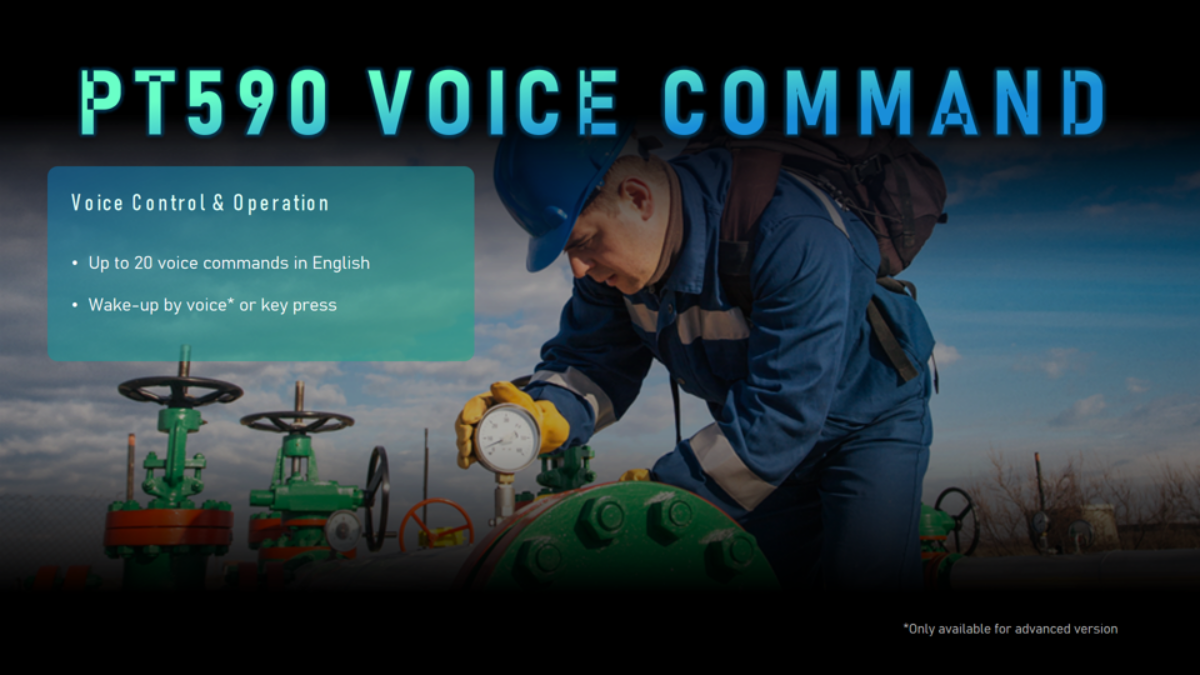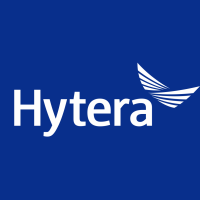Revolutionizing TETRA Communication: Hytera Pioneers AI Voice Commands-example of PT590
Two-way Radio
Automatic Speech Recognition (ASR) is a crucial branch of artificial intelligence, significantly enhancing natural human-machine interactions. This technology improves the usability of user interfaces across various industries, including industrial applications, home appliances, communication, automotive electronics, healthcare, home services, and consumer electronics.
Hytera introduces the PT590, the world's first TETRA radio with integrated Automatic Speech Recognition (ASR). This groundbreaking innovation empowers professionals in public safety, utilities, and emergency response with hands-free communication, enhancing efficiency and safety in critical situations.

With ASR, users can initiate communication anytime and anywhere through simple and user-friendly voice commands, freeing up their hands and allowing them to focus on their tasks. This minimizes distractions from manual radio operations and enhances work efficiency. Whether driving, maintaining equipment, or pursuing suspects, users can send and receive calls using voice commands, stay connected with their team, and request assistance promptly. They can also switch between different scenario modes seamlessly.
By focusing on current tasks without distractions, ASR technology is poised to transform user habits in the narrowband radio sector, setting a new direction for the future of professional narrowband communication.
- Simple Operation: Intuitive voice commands streamline communication, eliminating the need to memorize complex button combinations.
- Improved Efficiency: Directly invoke functions with voice, minimizing distractions and enhancing workflow.
- Business System Integration: Customizable voice commands enable seamless integration with existing systems.
- Hands-Free Operation: Operate the radio entirely through voice, freeing hands for other tasks.
- Safety: Reduced manual operation minimizes distractions in high-risk environments.
Real-World Uses
(1) Law Enforcement: During pursuits or confrontations, police officers can quickly initiate a call using the "Mak e a Call" voice command, reporting the situation to the control center and requesting support without the need for manual radio operations. This minimizes interference with the officer's ability to respond rapidly.
(2) Driving: Drivers can initiate calls or adjust volume without taking their hands off the wheel, using commands like "Make a Call" or "Volume up/Volume down," ensuring safe driving without manual distractions.
(3) Utility Work: During high-altitude maintenance tasks, workers can use the "Make a Call" command to communicate with colleagues or control centers. In noisy environments, they can use "Volume up" or "Outdoor mode" commands for clear communication, minimizing the risk of accidents.
(4) Logistics and Maintenance: Workers in warehouses or airports can initiate calls and adjust volumes with voice commands, avoiding workflow disruptions from manual radio operations.

How It Works
ASR technology must achieve high accuracy in recognizing speech, even amidst complex environmental noise, microphone distance, and directionality challenges, and effective echo cancellation during communication. Key considerations include:
(1) Hardware Design: Integration of a dedicated Neural Processing Unit (NPU) and Digital Signal Processor (DSP) preserves ASR algorithm resources and provides space for expanding AI capabilities. An additional audio pathway with echo cancellation algorithms reduces interference, optimizing microphone placement and environmental noise handling.
(2) Recognition Accuracy: High accuracy is essential in emergency communications. Hytera enhances recognition by:
- Conducting multi-batch optimization training on ASR and noise reduction algorithms.
- Training ASR algorithms with diverse pronunciation samples.
- Optimizing acoustic analysis and algorithmic validation.
- Tailoring ASR models for different languages.
- Implementing sound source localization techniques.
(3) Low Power Consumption Design: Optimizing AI algorithms for low power consumption, Hytera uses a multi-level wake-up mechanism and resource-efficient AI models.
(4) Testing Methodology: Hytera developed effective testing methods, collecting extensive data on background noise and designing comprehensive testing metrics. Automated testing programs enable thorough testing, identifying and resolving issues quickly.
(5) Self-learning: ASR algorithm models continually learn user voices, improving recognition accuracy in real-world use.
Why It Matters
- Enhanced Work Efficiency: Enables multitasking without distracting radio operations, maintaining seamless team communication.
- Future Adaptability: Deep learning integration will allow the system to adapt to different languages and individual user preferences without software or hardware updates. Users can create personalized control commands, further enhancing the user experience.
Hytera has overcome challenges in speech recognition accuracy, noise cancellation, and power consumption to deliver a reliable and effective ASR solution. Rigorous testing and a self-learning algorithm ensure optimal performance in real-world scenarios.
The integration of AI voice commands and ASR technology marks a significant advancement in the TETRA industry. Hytera's commitment to innovation paves the way for a more intuitive and efficient communication experience for professionals.






